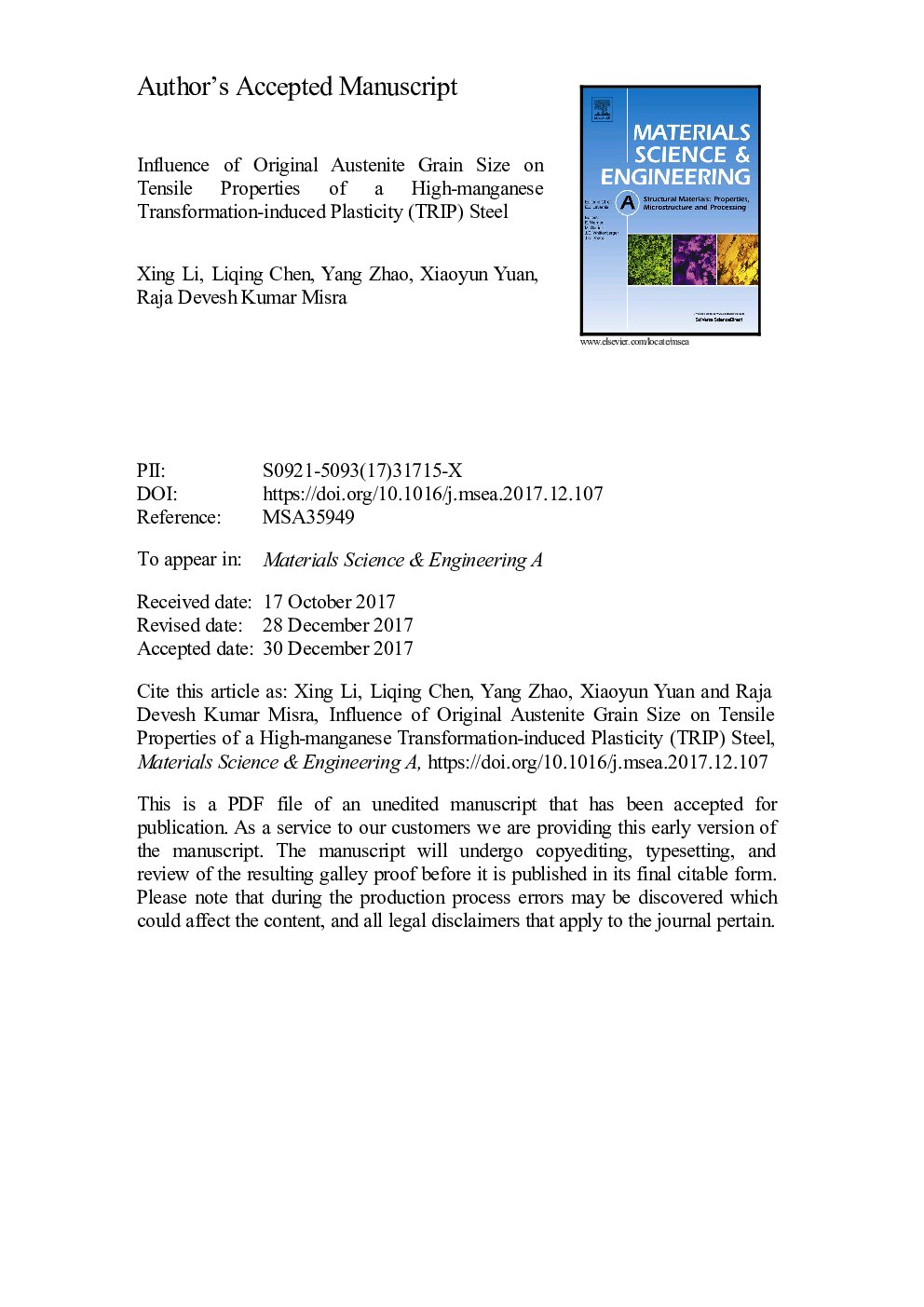| Article ID | Journal | Published Year | Pages | File Type |
|---|---|---|---|---|
| 7973637 | Materials Science and Engineering: A | 2018 | 26 Pages |
Abstract
Original austenite grain size and stacking fault energy (SFE) of a high-Mn transformation-induced plasticity (TRIP) steel were varied by annealing at different temperatures. The microstructural evolution during cooling and tensile deformation were investigated to explain the work hardening behavior. The study suggested that the amount of ε-martensite was increased with annealing temperature. When SFE was greater than 13.3 mJ/m2, twin may form in austenite on cooling; and ε-martensite cannot be thermally induced in austenite once its SFE was higher than 20.6 mJ/m2. Work hardening behavior of the steel annealed at different temperatures could be divided into two stages using Hollomon analysis. The grain refinement strengthening and deformation induced γ â ε transformation rendered 800 °C annealed sample to have the largest work hardening exponent in Stage-I, in this case ultimate tensile strength was also highest. In Stage-II, significant deformation-induced ε â αⲠtransformation in samples annealed at high temperatures resulted in greater improvement of work hardening exponent. The elongation of the steel was also improved with annealing temperature because local stress concentration was effectively released by ε â αⲠtransformation.
Related Topics
Physical Sciences and Engineering
Materials Science
Materials Science (General)
Authors
Xing Li, Liqing Chen, Yang Zhao, Xiaoyun Yuan, Raja Devesh Kumar Misra,
